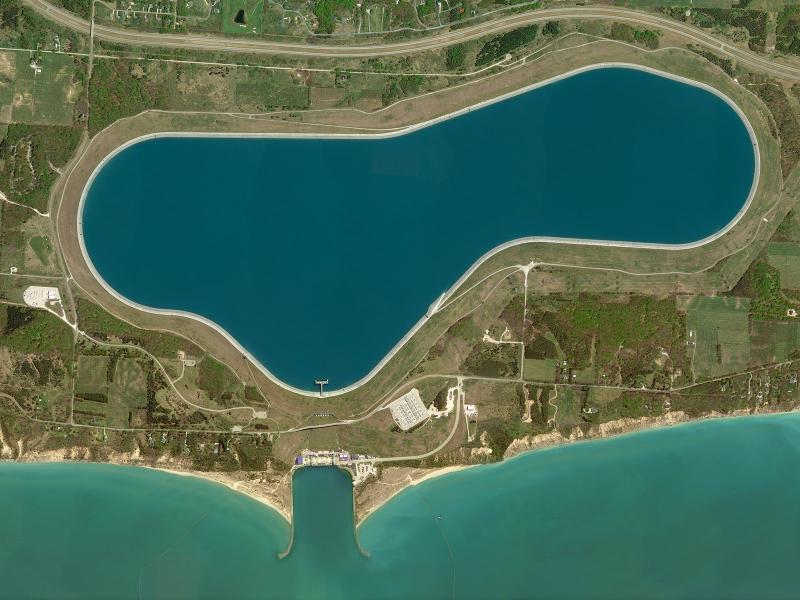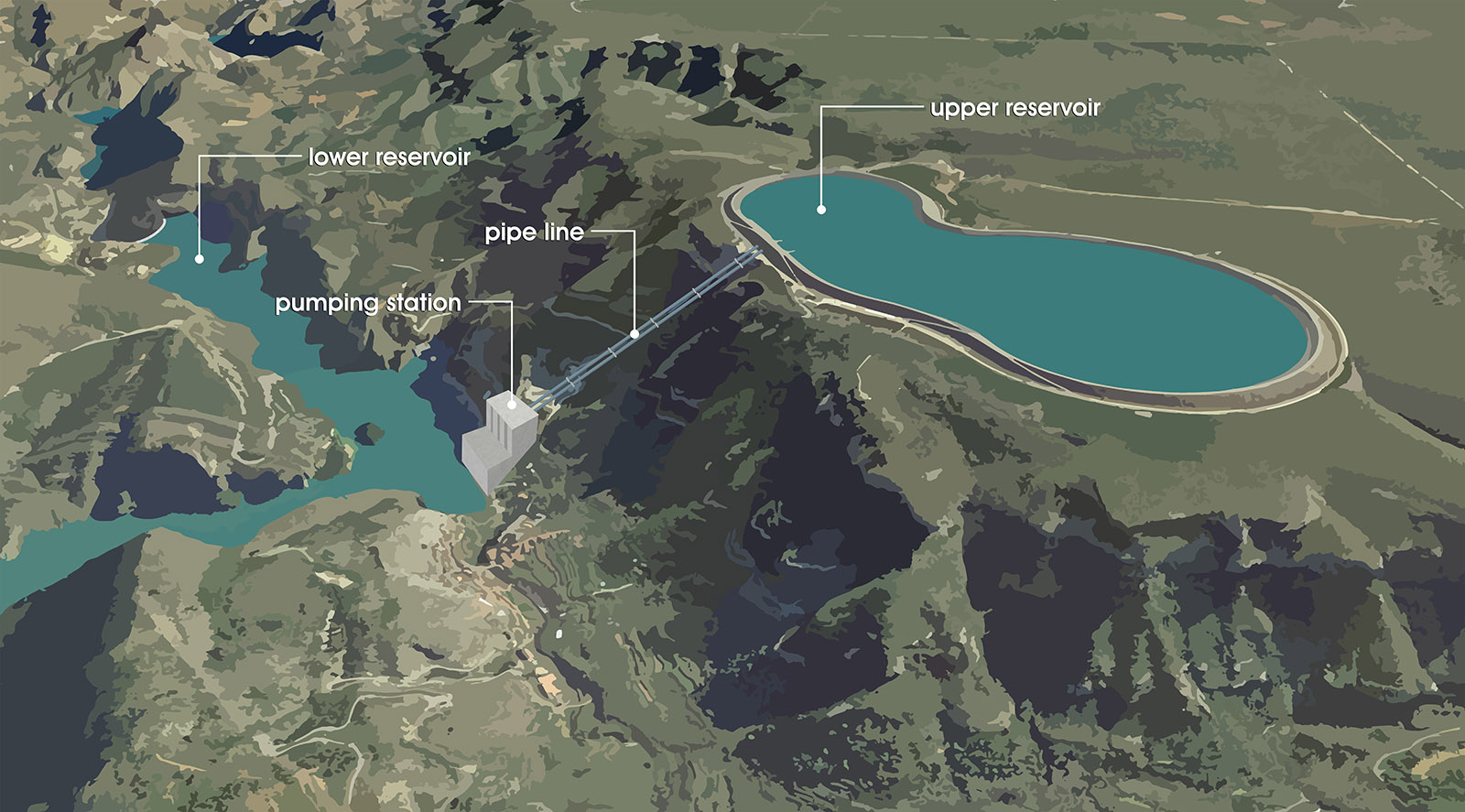
Pumped Storage
Hydropower
Pumped Storage
Hydropower
Storing grid-scale
energy with water
Storing grid-scale
energy with water
Image by 4H4 Photography | Shutterstock.com
A fundamental challenge with the electric grid is that while we can generate large amounts of clean electricity, that amount isn’t always available precisely when we need it. And, storing electricity for later use on a large, grid-wide scale is quite difficult. That’s where pumped storage hydropower (PSH) plays a key role. Like a giant water battery, PSH plants store energy in the form of water to be used at later times. But unlike batteries, PSH plants can store energy at a much larger scale.
PSH works by pumping and releasing water between two reservoirs at different elevations. During times of excess power and low energy prices, water is pumped to an upper reservoir for storage. When power or grid services are needed, water is released from the upper reservoir and flows down through a turbine that generates electricity.
In the United States, PSH serves as the nation’s largest form of utility-scale electricity storage. It is one of the most flexible and responsive ways to generate and store electricity, including on short notice. Because of this capability, grid operators can meet energy needs quickly during electricity fluctuations, like low wind or solar output.
Across the United States, 43 PSH facilities have the capacity to generate and store 21 gigawatts of renewable energy.
PNNL’s Role
Even though PSH is the most cost-effective form of grid energy storage currently available, new pumped storage development faces several challenges, such as its licensing and the valuation of the services it can provide. Accordingly, there has been very little new pumped storage development in the United States over the past 30 years.

Researchers from PNNL are working on efforts and technologies to overcome these barriers and enhance the capabilities of existing and future PSH facilities. With support from the Department of Energy Water Power Technologies Office, key focus areas include reducing environmental impacts and assessing the value this renewable power source can provide. PNNL’s work includes:
- Developing tools and processes to support valuation guidance for PSH developers, plant owners or operators, and other stakeholders to assess the value of existing or potential new PSH plants and their services.
- Providing guidance and support for the International Forum on Pumped Storage Hydropower to support a global transition to a clean energy future.
- Assessing PSH as a transmission asset to improve the representation of PSH in transmission planning and operation. Due to its size, PSH can perform some of the functions normally performed by transmission technologies (e.g., using charging and discharging to address transmission line congestion or overload), but storage is typically an afterthought during planning. PSH could be used for both transmission functions and to deliver energy market services. This improves the investment case for PSH and avoids development of both transmission and generation resources, potentially reducing customer energy costs as well.
- Support PSH development through technical analysis that address barriers and solutions.
- Compare environmental effects of open-loop and closed-loop PSH to support development of new PSH.

